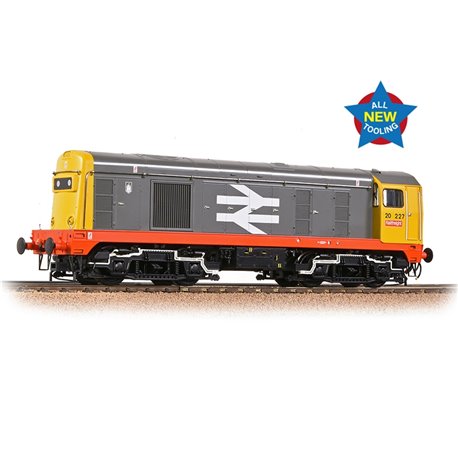No products
Product successfully added to your shopping cart
There are 0 items in your cart. There is 1 item in your cart.
Open on Good Friday
The shop will be open on Friday 18th April.
Bring us some chocolate!
Class 20/0 Headcode Box 20227 BR Railfreight (Red Stripe)
35-357
Bachmann
Class 20/0 Headcode Box 20227 BR Railfreight (Red Stripe)
- Era 8
- Pristine BR Railfreight (Red Stripe) Livery
- Accessory Pack
- NEM Coupling Pockets
- Sprung Buffers
- Powerful 5 pole motor with twin flywheels
- Interior Cab Lighting
- Directional Lighting
- Lighting can be controlled by easy-access switches or via DCC
- Speaker Fitted
- Equipped with a Plux22 DCC Decoder Socket – recommended Decoder item No. 36-570
- Length 190mm
This product is out of stock
More info
Class 20/0 Headcode Box 20227 BR Railfreight (Red Stripe)
- Era 8
- Pristine BR Railfreight (Red Stripe) Livery
- Accessory Pack
- NEM Coupling Pockets
- Sprung Buffers
- Powerful 5 pole motor with twin flywheels
- Interior Cab Lighting
- Directional Lighting
- Lighting can be controlled by easy-access switches or via DCC
- Speaker Fitted
- Equipped with a Plux22 DCC Decoder Socket – recommended Decoder item No. 36-570
- Length 190mm
CLASS 20/0 HISTORY
The British Railways Board's (BRB) 1955 modernisation plan called for a change to alternative forms of traction and manufacturers were asked to produce trial or initial designs for evaluation. English Electric adapted an existing design based on an export model for a 1,000bhp diesel and 20 were built as a pilot scheme for assessment.
The first batch was built in 1957 and the diesels were assigned to work from Devon's Road depot, East London. The design was a success from the start and by 1962 a total of 127 had been built. Following assessment of all the Type 1 diesels, BRB placed a further order increasing the total to 228 by 1968 and the design became the BR standard for 1,000bhp diesel locomotives. With the introduction of TOPS the locomotives were designated Class 20 and renumbered 20001 to 20228. The locomotives were principally designed for freight work but also saw service on summer passenger trains where train heating was not required. The Class 20s worked over the Eastern, London Midland and Scottish regions as well as into Wales and were commonly associated with coal traffic. The only drawback the Class had was its single end cab, unlike modern designs that have a cab at each end. BR resolved this problem by regularly operating the Class 20s as pairs, nose to nose, and with the combined power of 2,000bhp they were able to haul the heavier block freight trains.
BR's decision to switch to Type 5 and in particular Class 60 diesels in the late 1980s started a gradual withdrawal of the fleet, with just 28 left by 1994. A tribute to the design is that after 45 years the Class is still in service with DRS on mainline duties following refurbishment, the resulting locomotives being designated Class 20/3s. At least 28 of the class are now preserved.




